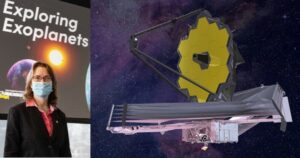The world is buzzing about the James Webb Space Telescope. Launched on Dec. 25, 2021, Webb takes us into the next phase of space discovery much like the Hubble Space Telescope became a game-changer in the 1990s.
After several months of calibration, the first images began releasing in July 2022. Crisp new images show detail in ways that will expand our understanding of the universe and change how we view other worlds beyond our solar system.
Exoplanets, or planets that orbit stars other than our own Sun, will become easier to locate with the Webb Telescope’s imagery. To date, over 5,000 exoplanets have been identified. Not only is the Webb Telescope expected to expand that number, but it will also increase our chances of locating a planet that has Earth-like conditions and is hospitable to life. In addition, it will enhance our understanding of planetary formation. Children of the 20th century had their favorite planets in our solar system; kids of the 21st century will have thousands of exoplanets to choose from!
Even more intriguing, Webb will allow us to see deeper into space than ever before. The farther away we can see, the further back in time we can see —all the way back to the beginning of the universe.
Why is seeing farther into space equivalent to seeing further back in time? Although light travels incredibly fast, it still takes time to reach us. It takes 8 minutes to reach us from the Sun and approximately 4 years from the next closest star, Alpha Centauri. In other words, the images we see from space represent the past. An image of the Andromeda galaxy, which is a distance of 2 million light years away, actually shows what that galaxy looked like 2 million years ago, not what it looks like at this very moment.
Compared to the Hubble Space Telescope, the Webb telescope can see objects that are hundreds of thousands of light years further. We will see early galaxies from when the universe was 13.6 billion years younger than it is now, or 1% of its current age. Webb will hopefully allow us to see the very first stars that ever formed after the Big Bang, and it will help us answer some of our big existential questions, such as, are we alone in the universe? How did the universe come to be?
The community is excited about the possibilities of this new space era. UWM Planetarium director Jean Creighton has brought the excitement of the James Webb Space Telescope to the community with talks at Discovery World, the Rotary Club, the Milwaukee Public Library and more. In addition, the Planetarium is hosting public events this fall to highlight the significance of Webb. The “Exploring Exoplanets with the James Webb Space Telescope” planetarium show runs on Oct. 7 and 14; Nov. 4, and 11; and Dec. 2 and 9 at 7 p.m. Shows also include indoor stargazing of the night sky free of light pollution. Tickets are available now from the UWM Planetarium website.
